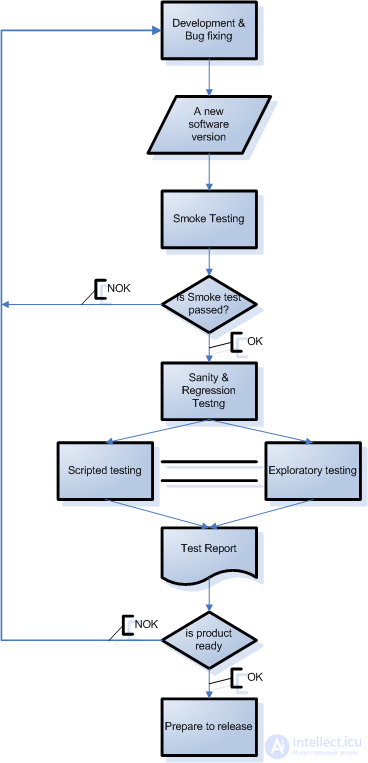Lecture
Testing does not start from the moment you were given a working application, but much earlier - as soon as rumors went that someone *** would be working on the project , we can assume that you have already started.
After receiving the first specifications, you start to write a test plan, develop test cases, assess the need to use automation, and how to automate functional testing, and load.
As soon as the developers have prepared a build, you should conduct smoke testing, the results of which make a conclusion about the possibility and feasibility of further testing:
In case " smoke test failed !!!", you send the application for revision.
If " smoke test passed !!!", then you go to the next type of testing - regression testing ( Regression testing ) and sanitary testing ( Sanity testing ).
After opening the bugtracker, you must double-check the defects that the developers transferred to Fixed, Rejected, Can't Reproduce, etc. Note that the Rejected and Can't Reproduce statuses are the most unpleasant for you - this is clear evidence that either you did not sufficiently localize the defect, did not very clearly describe the steps to play, or the developer was too lazy to reproduce the situation.
Having finished closing and re-opening defects, you proceed to the main work - centralized testing by test cases and / or (if you are an adherent of research testing) you start to “explore” the application.
When everything that has been planned has been completed, you have the results of running test cases, bug reports, questions for analysts and notes in the margins of your notebooks. Based on all this, you compile a test report and send it to the project team.
A similar process takes place from version to version, and after some time the test results will converge, with the test termination criteria stated in the test plan. This is where the main work related to testing directly is over, and you can proceed to transferring the application to the customer.
I hope that you remember the sequence of tests performed:
Smoke> Regression> all other types of testing

Comments
To leave a comment
Quality Assurance
Terms: Quality Assurance